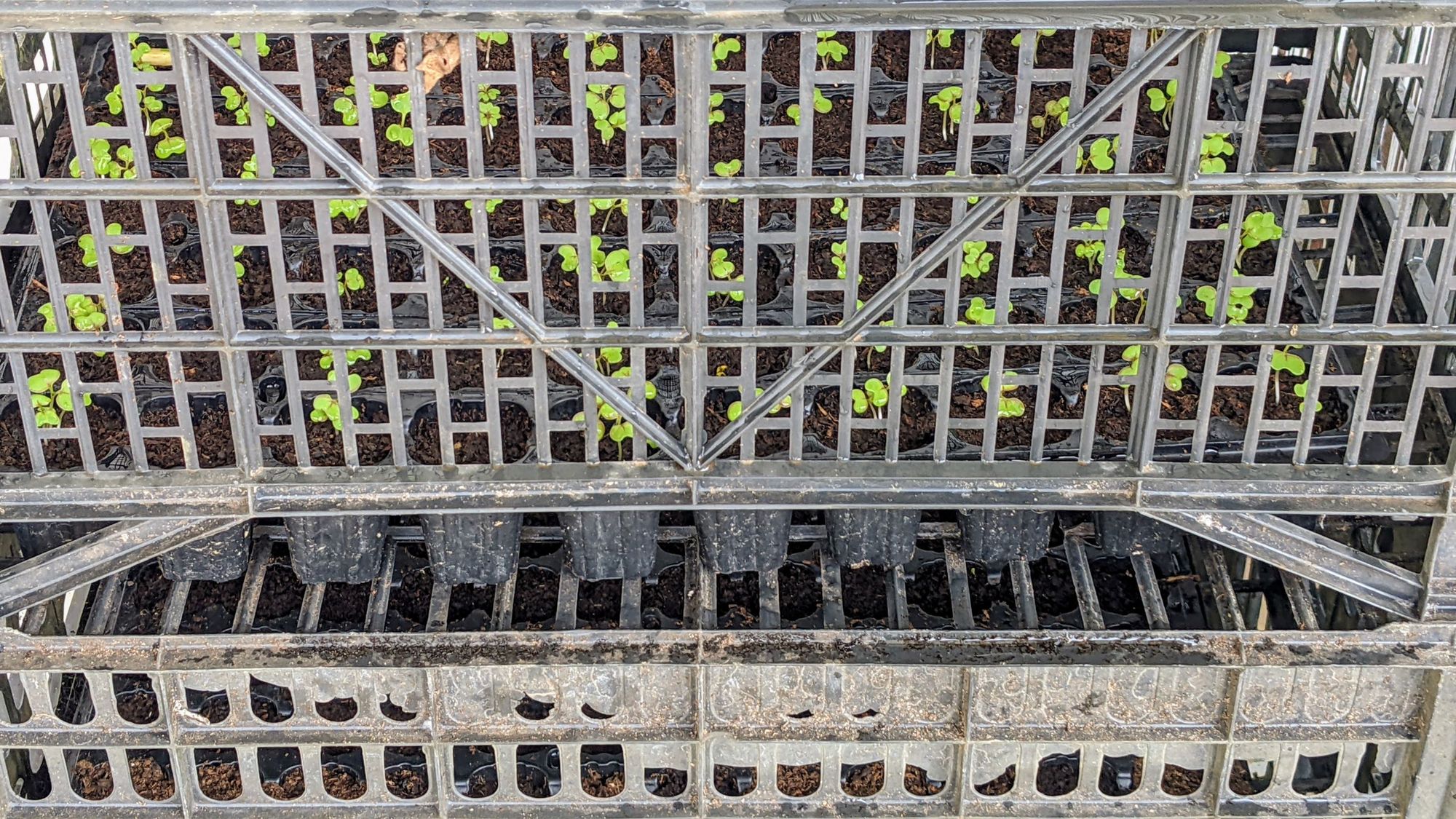The Winter has been unexpectedly dry, but it has been cold, particularly at night, hovering 0ºC.
Some plants are showing bugs and blossoms, or new leaves. The ground cover has taken on very well in some parts of the plot, although some areas still present a very exposed soil.
With all of this in mind, this is our list of projects to get ready for the season:
- Water
We need to install the irrigation system very soon. Because the Winter is usually wet, we thought we had some time, but the drought has made it clear that we need to hurry up. We have been taking water from the well for irrigation, which is not ideal. Our goal is to give more clean water to the subsoil than we take, preferentially not using the well at all. Clearly, we are not there yet. At the moment, we have a plan, and we have most of the materials. What we are missing is time and, most of all, to actually get started and see what else is needed. - Keep improving the soil
As often in permaculture, the solution here is to keep adding organic matter and mulching.
We have plenty of pine needles and straw we can still spread around. Additionally, the ground cover is providing so much biomass, that we can chop and spread some of it.
As the night temperatures raise a little, we will also be doing a new round of sowing ground cover, to the delight of the soil, ants, and birds.

- Zone 1
Last year, we started testing with vegetable gardens and the results were very promising. This season, the idea is to try and start growing increasingly more food for our family. Vegetables are of course the main priority, but we will also be starting a medicine garden. Thus, we will have an area for medicinal plants and perennials and another bed for herbs and annual vegetables. For this, the first steps are:
- Composting, using the 18-ish day method
- Sowing early varieties, in seed trays. For this, we used some trays and covered them with fruit baskets. In some cases, we also used some used pots and even some egg cartons. Anything goes until we have a more permanent spot to grow seedlings.

- Sowing flowers, in situ and seed trays. This will be both companion plants for Zone 1 and Zone 2 but also medicine plants. We have installed a couple of beds in Zone 2 for larger, slower growing crops like sweet potatoes, turnips, leek, onions and even carrots.

4. Structures
There are a couple of structures that would make our work more efficient around our plot: a shed, a better tool storage, a green-house and a compost bay. The main priority at the moment is the green-house, which is in progress and looking amazing.

- Bonus: build a compost bay, to more smoothly create new compost on a continuous bass.

